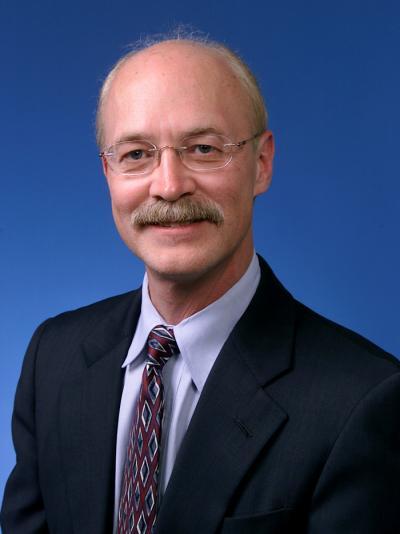LA JOLLA, CA – August 24, 2011 – A team of scientists from The Scripps Research Institute have successfully reengineered an important antibiotic to kill the deadliest antibiotic-resistant bacteria. The compound could one day be used clinically to treat patients with life-threatening and highly resistant bacterial infections.
The results were published in an advanced online issue of the Journal of the American Chemical Society.
"[These results] have true clinical significance and chart a path forward for the development of next generation antibiotics for the treatment of the most serious resistant bacterial infections," said Dale L. Boger, who is Richard and Alice Cramer Professor of Chemistry at The Scripps Research Institute and senior author of the new study. "The result could not be predicted. It really required the preparation of the molecule and the establishment of its properties."
The compound synthesized is an analogue of the well-known commercial antibiotic vancomycin.
The new analogue was prepared in an elegant total synthesis, a momentous achievement from a synthetic chemistry point of view. "In addition to the elegantly designed synthesis," said Jian Xie, postdoctoral fellow in Boger's group and first author on the publication, "I am exceedingly gratified that our results could have the potential to be a great service to mankind."
A Single Atom Changes Everything
Vancomycin is an antibiotic of last resort, which is used only after treatment with other antibiotics has failed. Clinically, it is used to treat patients that are either infected with the virulent methicillin-resistant Staphylococcus aureus (MRSA), individuals on dialysis, or those allergic to beta-lactam antibiotics (penicillin, cephalosporins).
The drug was first used clinically in the 1950s, and the first vancomycin-resistant bacterial strains were isolated in the 1980s.
Vancomycin normally works by grabbing hold of and sequestering the bacterial cell-wall making machinery, a peptidoglycan (carbohydrate and peptide containing molecule). Only Gram-positive bacteria have a cell wall, which is a membrane on the cell's outer surface.

Dale Boger, Ph.D., is a professor at the Scripps Research Institute.
(Photo Credit: Photo courtesy of The Scripps Research Institute.)
The antibiotic binds so tightly to the peptidoglycan that the bacteria can no longer use the machinery to make their cell wall and thus die.
Unfortunately, bacteria have found a way to alter the peptidoglycan in such a way that the antibiotic can no longer grab hold. Think of it as trying to hold a ball without any fingers. Biochemically the bacteria express a mutant form of the peptidoglycan in which properties of a key atom used in the recognition process are changed. This simply means where there once was something attractive there is now something repulsive. Chemically, the bacteria replace an amide (carbonyl, RC=O linked to an amine) with an ester (a carbonyl, RC=O linked to an oxygen, O).
This one atom change changes the entire game and renders vancomycin ineffective. Until now.
Reengineering Vancomycin
Like magnets, molecular interactions can be attractive (oppositely charged) or repulsive (identically charged). What chemists in the Boger lab have done is made this key interaction no longer repulsive, but attractive.
So now the new vancomycin analogue can grab hold of the mutant peptidoglycan, and again prevent the bacteria from making the cell wall and killing the resistant bacteria. But what is so remarkable about the design is that the redesigned antibiotic maintains its ability to bind the wild type peptidoglycan as well.
Changing the properties of a key amide at the core of the natural products structure required a new synthetic strategy that only the most talented chemists could achieve in the lab. The preparation of the entire structure took a great deal of time and a fresh approach.
The new compound has an amidine (an iminium, RC=NH+ linked to a nitrogen, N) instead of an amide at a key position buried in the interior of the natural product. However, to install such a functional group, the chemical properties of the amide carbonyl were not useful, as the natural product has seven of them.
Instead, the group relied on the chemical properties of sulfur (S), oxygen's downstairs neighbor in the periodic table, to install the desired nitrogen. To do this, a second analogue was prepared in which the key amide was chemically altered to a thioamide. "The thioamide allowed us to make any modification at the residue 4 amide that we would like to make, such as the amidine, but we could also make the methylene analogue," said Boger citing work published in another paper (B. Crowley and D. L. Boger, J. Am. Chem. Soc. 128: 2885-2892). "And there are other modifications that we are making at the present time that we haven't disclosed. We are just getting to that work."
The most fundamental finding in the synthesis was that the installation of the amidine could be done in the last step, as a single-step conversion, on the fully unprotected thioamide analogue. Providing an elegant and novel approach to the analogue, which contrasts other published multistep procedures. This chemical behavior was, as Boger said, "an astonishing result as there are no protecting groups and it is a single step reaction… in the end it was the simplest and most straightforward way to prepare the amidine."
Although it is still at its early stages and there is much work ahead. Currently, the only route known to make the new antibiotic is the one published by Boger and his co-workers, which presently provides laboratory amounts of the compound. So Professor Boger now looks forward and will continue to investigate the "host of alternative approaches" for the preparation of the molecule "such as reengineered organisms to produce the material or semi-synthetic approaches to the analogue. That is going to be part of the next stage of the work."
Source: Scripps Research Institute